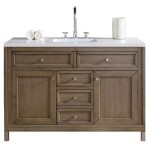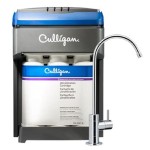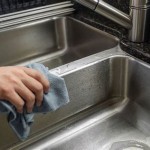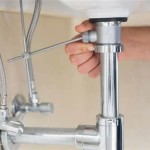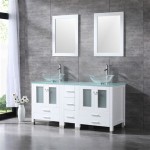Understanding the S Trap for Bathroom Sinks: Function, Issues, and Alternatives
The S trap is a ubiquitous plumbing component, particularly prevalent in older bathroom installations. It is characterized by its distinctive "S" shape, formed by the drainpipe's curvature beneath the sink. This article provides a comprehensive overview of the S trap, detailing its function in preventing sewer gases from entering the living space, common problems associated with its design, and alternative trap configurations that offer improved performance and code compliance.
The primary purpose of any plumbing trap, including the S trap, is to maintain a water seal. This water seal acts as a barrier, physically separating the drain system from the sewer line. Sewer lines contain a mixture of gases, including methane, hydrogen sulfide, and ammonia, all of which are potentially harmful and produce unpleasant odors. Without a functional trap, these gases would freely flow back up through the drain and into the bathroom.
The design of the S trap relies on the principle of gravity. Wastewater flows down the drain, filling the curved portion of the pipe. Once the water level reaches a certain point, it overflows and continues down the drain line. A small amount of water remains in the curved section, creating the necessary water seal. This seal prevents the upward passage of sewer gases.
While the S trap has historically been a widely used solution, its design presents inherent limitations that can lead to performance issues. These limitations primarily stem from the vulnerability of the water seal to disruption through various plumbing phenomena.
Key Point 1: Vulnerability to Siphonage
One of the most significant drawbacks of the S trap is its susceptibility to siphonage. Siphonage occurs when a vacuum is created in the drain line, pulling water out of the trap. This can happen in a few different ways, rendering the trap ineffective and allowing sewer gases to escape.
Self-siphonage occurs when a large volume of water drains rapidly through the pipe. As the water flows, it creates a suction effect that can pull the water seal out of the trap. This is particularly common with sinks that have high-flow faucets or when a large item, such as a bucket of water, is dumped down the drain.
Induced siphonage can occur when another plumbing fixture connected to the same drain line is used. For example, if a toilet is flushed, the rapid flow of water through the drain line can create a negative pressure that siphons water from the S trap of a nearby sink. This is more likely to happen when the plumbing system is not adequately vented.
Back-pressure siphonage, although less common, can occur when there is a blockage or restriction further down the drain line. This can cause pressure to build up in the drain line, forcing water out of the trap.
When any of these types of siphonage occur, the water seal in the S trap is broken, leaving a direct pathway for sewer gases to enter the bathroom. This can result in unpleasant odors and potentially harmful exposure to sewer gases.
Mitigation of siphonage problems with an S trap is difficult without altering the plumbing system. The inherent design makes it prone to these issues, and simple adjustments often prove ineffective.
Key Point 2: Evaporation and Seal Breakdown
Another issue that affects the performance of S traps is the evaporation of water in the trap. If a sink is not used for an extended period, the water in the trap can slowly evaporate, breaking the water seal. This is a common problem in vacation homes or guest bathrooms that are not regularly used.
The rate of evaporation depends on several factors, including the ambient temperature, humidity, and the size of the trap. In hot, dry climates, evaporation can occur more rapidly. A larger trap may hold more water and, therefore, take longer to evaporate, but this is not a foolproof solution.
Once the water seal is broken due to evaporation, sewer gases can freely enter the bathroom until the trap is refilled with water. This can create a noticeable odor problem, especially after periods of extended non-use.
To prevent evaporation in infrequently used sinks, it is advisable to periodically run water down the drain to replenish the water seal. This simple practice can help maintain the integrity of the trap and prevent sewer gas leaks.
While evaporation is a simpler problem to address than siphonage, it highlights another vulnerability of the S trap design, particularly in specific environmental conditions or usage patterns.
Key Point 3: Modern Alternatives: The P Trap and Venting
Due to the inherent limitations of the S trap, modern plumbing codes generally discourage its use in favor of the P trap. The P trap is designed to mitigate the siphonage problems that plague the S trap.
The key difference between the S trap and the P trap lies in the addition of a vent pipe. The P trap, in conjunction with a vent pipe, creates a balanced plumbing system that prevents the formation of vacuums in the drain line. The vent pipe allows air to enter the drain line as water flows, equalizing the pressure and preventing siphonage.
The P trap's design features a horizontal section that extends from the sink drain to a vertical drop. This horizontal section connects to a vent pipe, which rises vertically and connects to the main vent stack of the plumbing system. When water flows down the sink drain, the vent pipe allows air to enter the drain line, preventing the formation of a vacuum and ensuring that the water seal in the trap remains intact.
In addition to preventing siphonage, the vent pipe also helps to prevent back pressure in the drain line. This further enhances the performance and reliability of the P trap.
Modern plumbing codes typically require the use of P traps with proper venting to ensure the safe and efficient removal of wastewater and the prevention of sewer gas leaks. When renovating or installing new bathroom sinks, it is crucial to adhere to these codes and use a P trap configuration.
Retrofitting an existing S trap with a P trap can be a more complex task, often requiring modifications to the drain line and the addition of a vent pipe. In some cases, it may be necessary to consult with a qualified plumber to ensure that the installation is done correctly and in compliance with local plumbing codes.
While the P trap is the preferred alternative, other trap configurations exist for specific situations where a standard P trap cannot be installed. These include drum traps and bottle traps, although these are less common and may have their own limitations.
The superiority of the P trap, coupled with proper venting, makes it the standard for modern plumbing installations, offering a more reliable and safe solution compared to the older S trap design. Understanding the differences between these trap configurations is crucial for ensuring a well-functioning and safe plumbing system.
In conclusion, the S trap, while historically significant, presents several challenges related to siphonage and seal breakdown. The P trap, with its integrated venting system, offers a superior alternative that addresses these issues and provides a more reliable barrier against sewer gases. When installing or maintaining bathroom sinks, adherence to modern plumbing codes and the use of P traps are essential for ensuring safety and preventing plumbing problems.

Oatey 1 4 In White Plastic Sink Drain S Trap Hdc9719bg The Home

The Ultimate Guide To S Traps Hammerpedia

Sink Trap Stainless Steel S For Bathroom Kitchen Sewer Pipe Drain Tube Chrome Made In China Com

S Trap Vs P What Is The Difference

How To Replace S Trap With A P Drain Plumbing Traps Work Air Actuated Valve Install

S Trap Vs P What Is The Difference Hofen Drain

How To Install Or Replace A Swivel S Trap Waste Fitting For Bathroom Basin Kitchen Sink

Sink Trap Stainless Steel S For Bathroom Kitchen Sewer Pipe Drain Tube Chrome Made In China Com

Viva Bathroom Kitchen Basin Sink 32 Mm Easi Flo Swivel S Trap Wts3276 Uk

Types Of Plumbing Traps And How They Work Bestlife52
